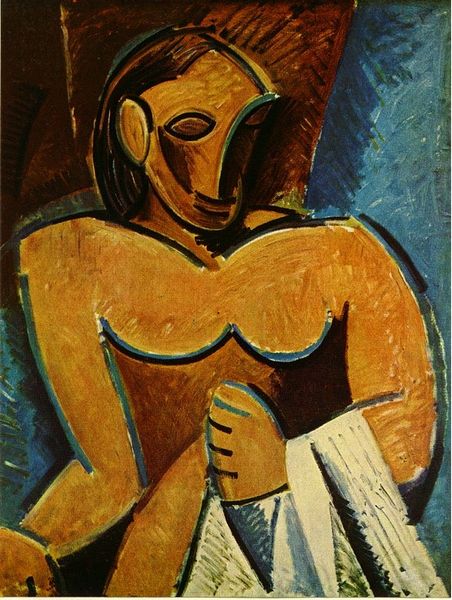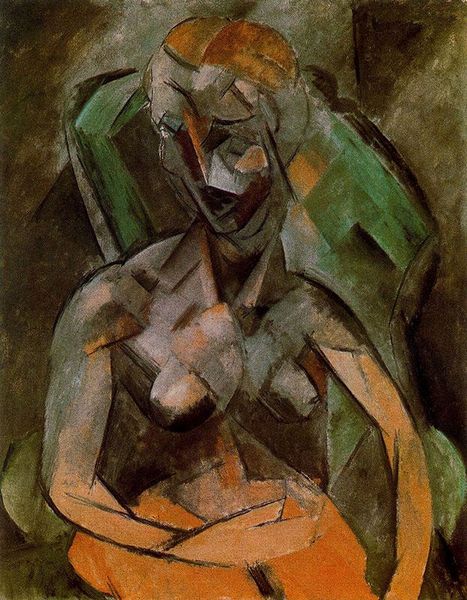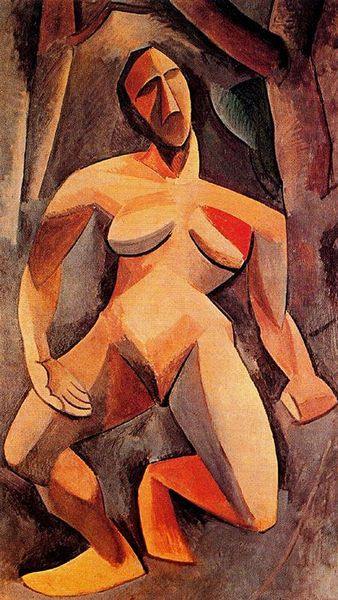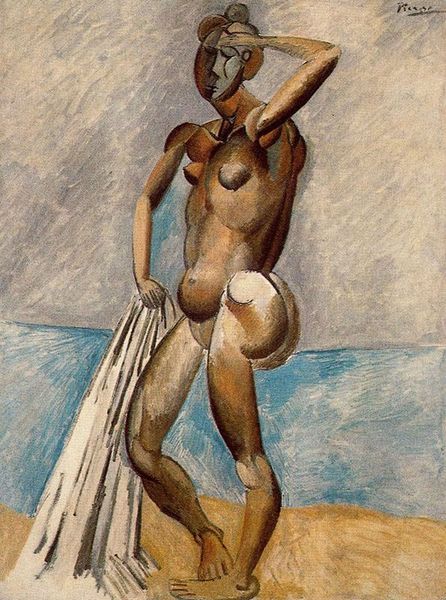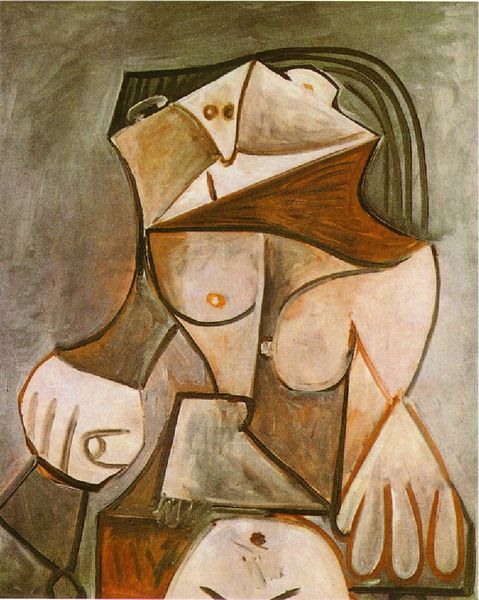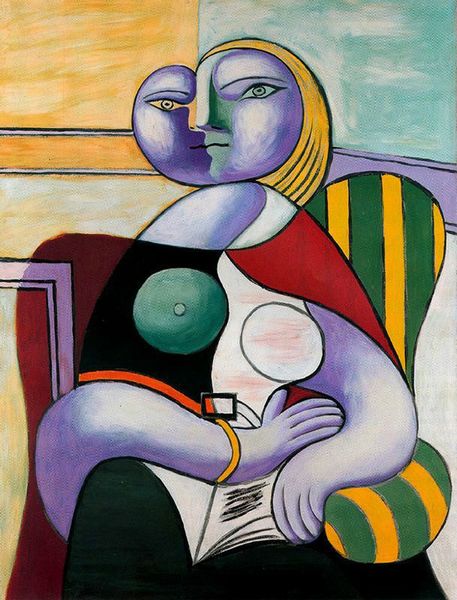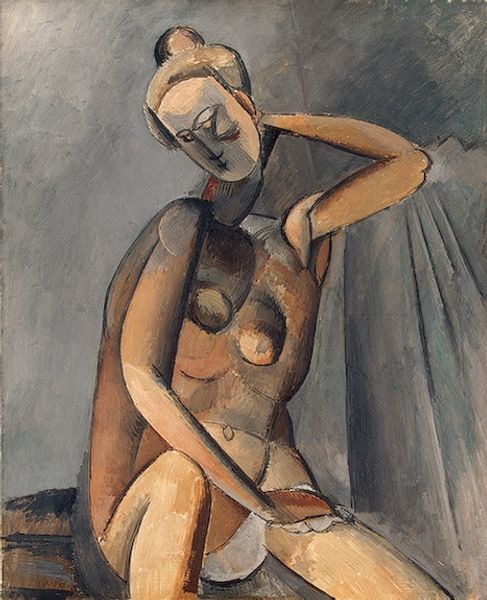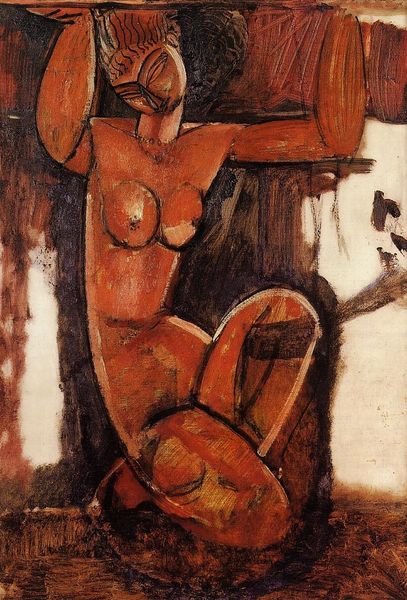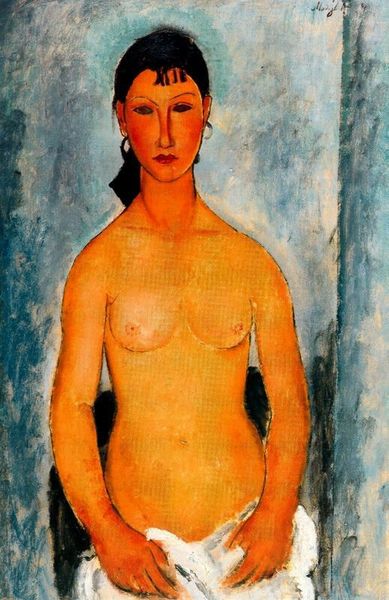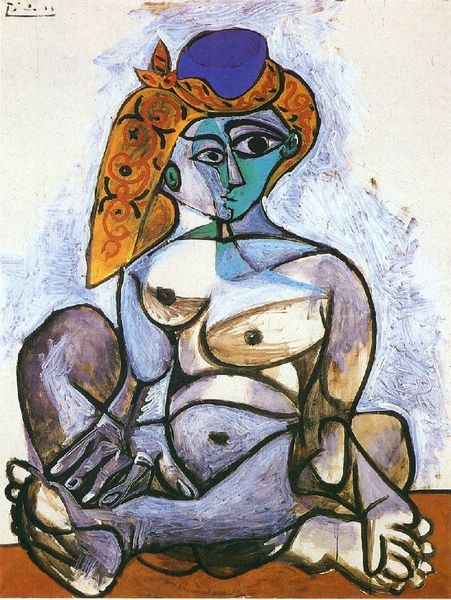
painting, oil-paint
#
portrait
#
cubism
#
painting
#
oil-paint
#
oil painting
#
nude
#
modernism
Dimensions: 152 x 101 cm
Copyright: Public domain US
Editor: Here we have Picasso's "Woman with a Fan," painted in 1907. It's an oil painting, a striking portrait rendered in those fractured planes we associate with Cubism. There's a stillness about it, despite the angularity. What stands out to you when you look at this painting? Curator: What I find compelling is how this piece sits on the cusp of a major shift in art history. It precedes full-blown Cubism, but the influence of non-Western art, particularly African masks, is unmistakable. The simplification of form, the flattened perspective...it all points to a deliberate break from Western artistic tradition. Do you see how it challenges established notions of beauty and representation, particularly in the depiction of the female form? Editor: I see what you mean about challenging beauty standards. It’s a nude, but it isn’t exactly... idealized. What was the art world's reaction back then? Curator: Shock, mostly. Remember, the Salon system still held considerable sway, defining what was acceptable. Picasso and others were actively pushing against that. This painting wasn't just a portrait; it was a declaration. A statement about the artist’s power to redefine reality, influencing not just painting but sculpture and other art forms as well. It’s hard to overstate its role in dismantling the established art market. Editor: So, its importance is less about the "woman" and more about what it symbolized for artistic freedom? Curator: Precisely! The "woman" serves as a vehicle. Picasso uses her to explore new modes of seeing, new ways of representing the world, and ultimately, new ways for art to function within society. It encourages us to question how cultural institutions have shaped our perceptions and expectations. Editor: That gives me a whole new appreciation for what Picasso was trying to do. It wasn't just about style, it was about shifting power dynamics within the art world itself. Curator: Exactly. It's a powerful reminder of the ongoing dialogue between art and its social context.
Comments
No comments
Be the first to comment and join the conversation on the ultimate creative platform.
